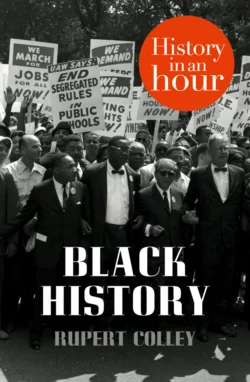Black History: History in an Hour

Rupert Colley
Тип: электронная книга
Жанр: Историческая литература
Язык: на английском языке
Стоимость: 191.96 ₽
Статус: В продаже
Издательство: HarperCollins
Дата публикации: 28.04.2024
Отзывы: Пока нет Добавить отзыв
О книге: Love history? Know your stuff with History in an Hour.Encompassing everything from immigration to civil war, emancipation, slavery and migration, Black History in an Hour gives you a neat overview of this vast and fascinating subject.This e-book is a superb introduction to the long and varied history of African Americans.Know your stuff: read about Black History in just one hour.